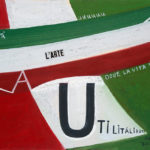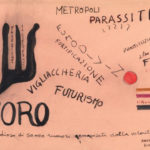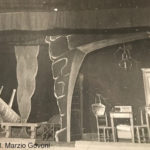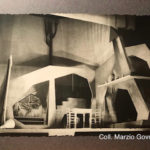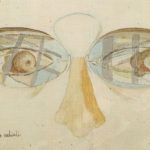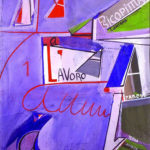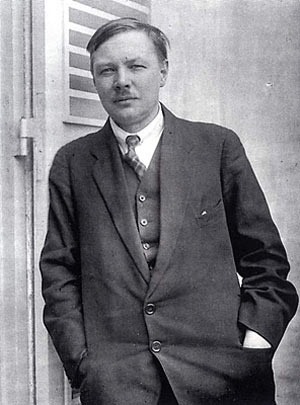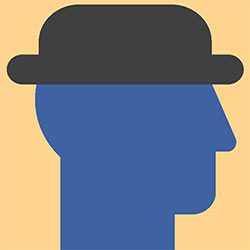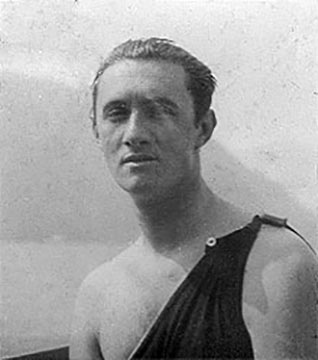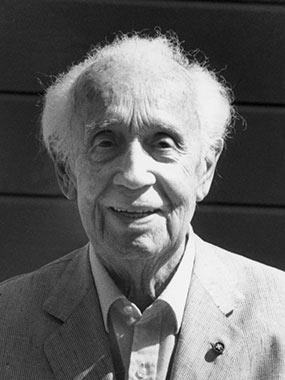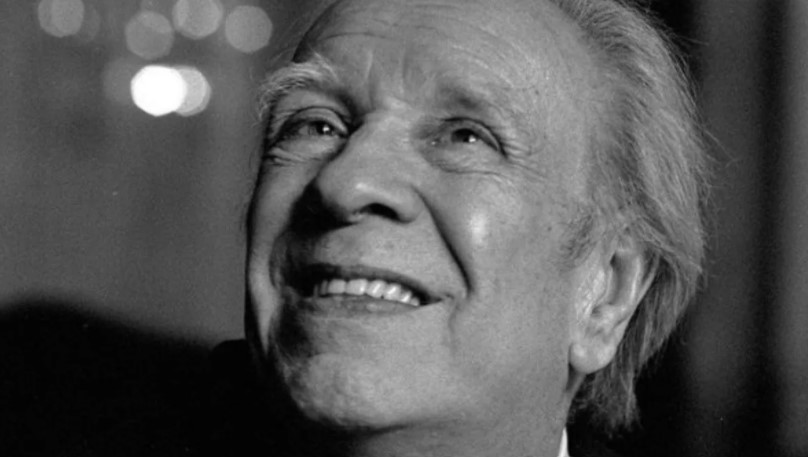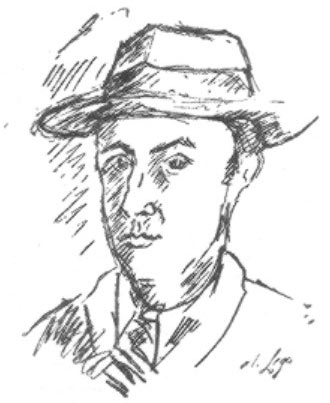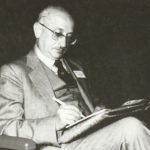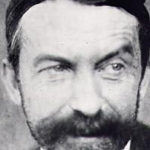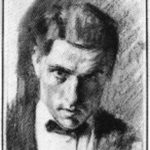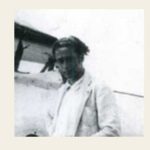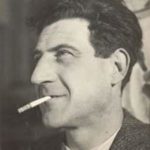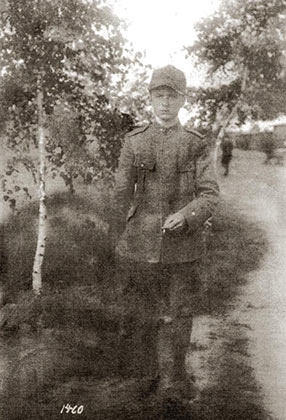
Rognoni Angelo
Angelo Rognoni (Pavia 1896 – ivi 1957). Aspirante ufficiale, Sottotenente dell’89° Reggimento Fanteria Brigata Salerno. Coerente con il Futurismo, cui aderisce soprattutto come pittore, parte volontario per il fronte. Catturato il 26 ottobre 1917 durante la presa del Monte Matajur, nelle Prealpi Giulie, viene internato a Crossen e poi a Cellelager nel Blocco A.
Scrive Film di prigionia. Parole in libertà, 26 composizioni che raccontano la cattura e la vita nel Lager. Tornato a Pavia alla fine della guerra, riordina i suoi ricordi in Gefangenen.
Rognoni è anche autore di opere teatrali. Amico di Guido Orzi a Cellelager, intrattiene con lui intensi rapporti epistolari. Antifascista convinto, abbraccia gli ideali anarchici poi quelli comunisti. Il diario Gefangenen, è stato pubblicato dal Comune di Pavia nel 2008.
Teatro sintetico Un'aula scolastica. IL PROFESSORE (trent'anni. Legge agli allievi) - Dante è un grande poeta. Egli ha scritto la Divina Commedia e… (Pochi secondi di buio) IL PROFESSORE (cinquant'anni. Legge con voce annoiata) - Dante è un grande poeta. Egli ha scritto la Divina Commedia e… (Pochi secondi di buio) IL PROFESSORE (sessant'anni. E' ormai un grammofono) - Dante è un grande poeta… UN ALLIEVO (interrompendolo) - Perché? IL PROFESSORE (meravigliato e imbarazzato) - E' stampato qui. Siedi e sta zitto. Dante è un grande poeta. Egli ha scritto… Sipario
(English)
Born in 1896, Angelo Rognoni was predominantly influenced by the 1900s and 1910s. The vigorous development of pictorial art defined the first decades of the twentieth century. It was an era of experimentation and post-Impressionism, with artists first investigating Expressionism and Abstraction. A variety of collectives and groups of artists across the world evolved different ways of articulating these crucial innovations. The Fauves are widely considered to be the first major Post-Impressionist group, working in the beginning of the 20th century. With artists such as Henry Matisse within their ranks, the Fauves believed that intense, other worldly colours and vibrant brushstrokes were an integral component of their work. At the same time, a young Pablo Picasso, still in his youth, created his famous Blue and Rose periods in Paris, and by the end of the 1920s he had developed the first ideas of depicting fractured views of reality alongside his contemporary Georges Braque. This movement became known as Analytical Cubism.
The De Stijl group in the Netherlands, led by the teachings of Piet Mondrian, began to practice important theories about Abstraction. Alongside this, Kasimir Malevich and his contemporaries developed Constructivism and Suprematism in the Soviet Union. These revolutionary styles of art were rigorous and politicised, and looked to serve a new world order. In the meantime, Expressive painting was being further established and explored in various countries around the world. the Nabis in France were the first to truly explore this movement at the start of the century, and German groups such as Die Brucke and Der Blaue Reiter soon followed suit, developing the careers of renowned artists such as Kirchner, Franz Marc, and Wassily Kandinsky.
The first twenty years of the 20th century can be considered to be the most prolific, and are noted as the era in art history when modern and modernist philosophies first began to take hold culturally. Mechanisation in production and ideas of order and rationality enabled the discipline of architecture to develop at an extraordinary rate, and was defined by in the work of Le Corbusier and Gerrit Rietveld. Bauhaus was predominant at this time and defined the idea of a common discipline across all sectors of creative art. Most, if not all, of the ideologies of important art movements that we associate with modern and contemporary art can be traced back to the diverse range of work made during this era. The psychological applications of art began to be further explored and developed following the terrors of the First World War. Dadaism, a nonsensical and absurdist movement inspired directly by the war, appeared in Paris, Berlin, Zurich and Hannover, and launched the careers of creatives such as Marcel Duchamp, Francis Picabia, Hannah Höch and Kurt Schwitters. The essential philosophies behind Dadaism would go on to find ground in Surrealism, which was the first art movement to fully incorporate psychology and ideas about the subconscious, and took great inspiration from the work of Sigmund Freud and Carl Jung.
